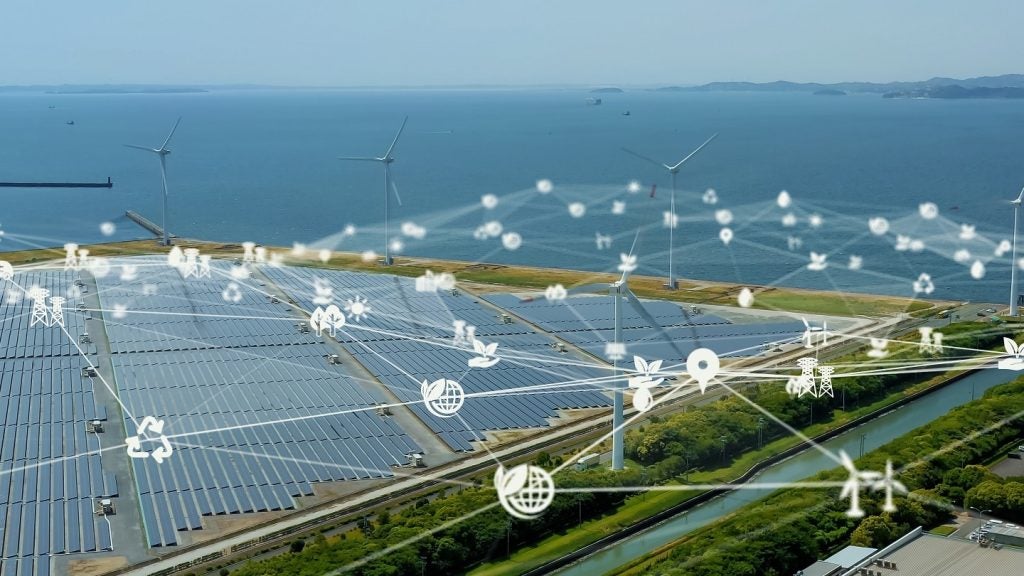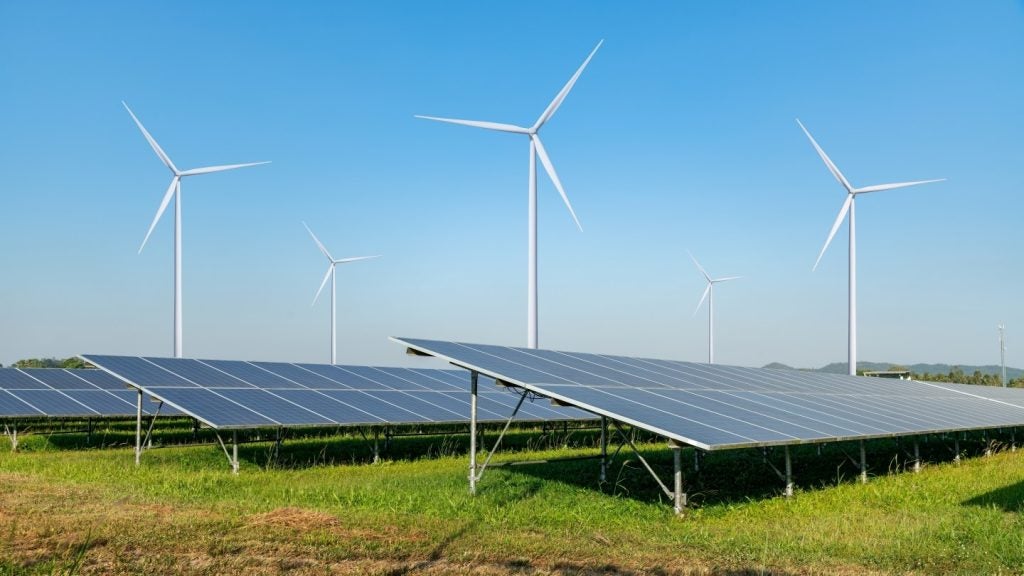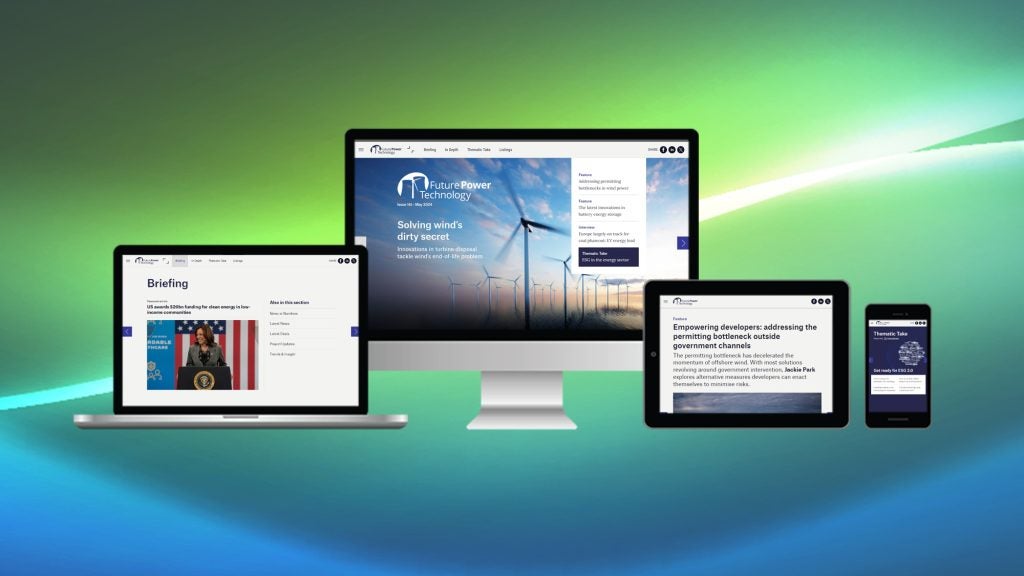With hundreds of the world's climate scientists reported to be expecting global temperature rises of at least 2.5°C, well above the internationally agreed target of 1.5C, the need for clean energy and to reduce reliance on fossil fuels is more pressing than ever.
Kelly Cole, general manager of plant distribution and power systems company Finning UK & Ireland, believes that AI can be used to ease the transition to clean energy by optimising the use and storage of energy from renewable sources.
Speaking to Power Technology's sister publication Energy Monitor, Cole highlighted how some organisations are already optimising energy usage with AI and stressed the need for human oversight and robust cybersecurity for the technology.
Kris Cooper (KC): What role will AI play in the clean energy transition?
Kelly Cole: AI offers significant potential in accelerating the clean energy transition. With AI we can optimise energy consumption and facilitate the integration of renewable energy sources, through enhancing grid management and stability. By analysing weather patterns, historical renewable energy generation data and other relevant variables, algorithms can accurately forecast renewable energy production. This predictive capability allows grid operators to better plan for and manage the integration of clean energy sources into the overall energy mix.
AI’s ability to provide sophisticated real-time analysis at a level beyond human abilities is prominent among the ways it will support the clean energy transition. Creating the right algorithms and supplying these to AI could allow us to analyse vast amounts of energy consumption data in real time – identifying system and operational inefficiencies that might otherwise go unnoticed.
KC: How can AI optimise energy consumption?
Kelly Cole: The prediction of peak demands can help optimise the charging and discharging schedules of energy storage systems such as batteries and pumped hydro storage, based on electricity prices, renewable energy generation forecasts and grid conditions. By intelligently managing energy storage assets, AI could help us to store excess renewable energy when it is abundant and inexpensive and discharge it when demand is high or renewable generation is low, thereby increasing grid stability and reliability.
There are also benefits for those at home, too, where energy management systems could utilise AI to automatically adjust heating, ventilation and air conditioning to deliver energy savings.
KC: What will be the challenges of using AI to aid the clean energy transition?
Kelly Cole: Firstly, access to high-quality data is crucial for training AI algorithms effectively. Today, we see fragmented or incomplete data, making it challenging to develop accurate predictive models and optimisation algorithms. We also face data privacy or security concerns, which limit data sharing among stakeholders. These security concerns need to be addressed to facilitate secure data sharing among stakeholders, meaning transparency and accountability are important.
Operability and compatibility between different components and systems can be a challenge, too. Addressing this challenge may involve significant upfront investments in infrastructure upgrades and software development.
KC: How can AI improve grid stability?
Kelly Cole: AI has the potential to truly enhance grid management by predicting demand fluctuations, identifying potential failures and optimising the distribution of energy resources. By analysing real-time data from smart meters, sensors and other internet-of-things devices, AI can help grid operators make informed decisions to balance supply and demand, prevent outages and ensure a reliable energy supply.
By intelligently managing energy storage assets, AI can help store excess renewable energy when it is abundant and inexpensive and discharge it when demand is high or renewable generation is low in order to stabilise the grid and improve reliability.
When the energy storage systems are low or are not sufficient to meet demand, other technology such as gas can be used to generate electricity. This holistic view will help us balance demand with the supply of energy from renewables, storage and demand response power generation.
KC: Who is already using AI to optimise energy consumption and how is it going?
Kelly Cole: Numerous organisations across various industries are already using AI to optimise energy consumption, and the results are promising.
Google has reported a 40% reduction in energy used for cooling its data centres after implementing AI-driven optimisations.
Utilities and energy companies are implementing AI in smart grid systems to optimise energy distribution and consumption. AI algorithms analyse real-time data from smart meters, weather forecasts and other sources to predict energy demand accurately. This allows utilities to adjust energy production and distribution in real time, reducing waste and costs while improving reliability.
We are also seeing commercial buildings incorporating AI into building management systems to optimise energy usage. These systems monitor and control various building systems such as heating, ventilation and air conditioning, lighting and occupancy in order to minimise energy waste while maintaining occupant comfort.
Overall, the adoption of AI for energy optimisation is still in its early stages but showing great promise in improving energy efficiency, reducing costs and mitigating environmental impacts.
KC: Are there any risks to using AI to enhance grid stability?
Kelly Cole: AI algorithms rely heavily on data, and the quality of the data used can significantly impact their effectiveness. Inaccurate or incomplete data can lead to errors in predictions or decisions, potentially compromising grid stability. Ensuring the security and privacy of sensitive data used by AI systems is crucial to prevent unauthorised access or manipulation.
AI-enabled grid systems are vulnerable to cyber threats including hacking, malware and denial-of-service attacks. Adversaries could exploit vulnerabilities in AI algorithms or manipulate data inputs to disrupt grid operations, leading to failures or other serious consequences. Robust cybersecurity measures, including encryption, authentication and intrusion detection are essential to mitigate these risks.
Over-reliance on AI systems for grid management could pose a risk if the systems fail or malfunction. Human operators may become complacent or less proficient in manual grid control processes and we could quickly find ourselves in a Little Britain sketch where the “computer says no”. Maintaining human oversight and a deep level of system knowledge is critical, along with backup systems to ensure resilience and continuity of grid operations.















